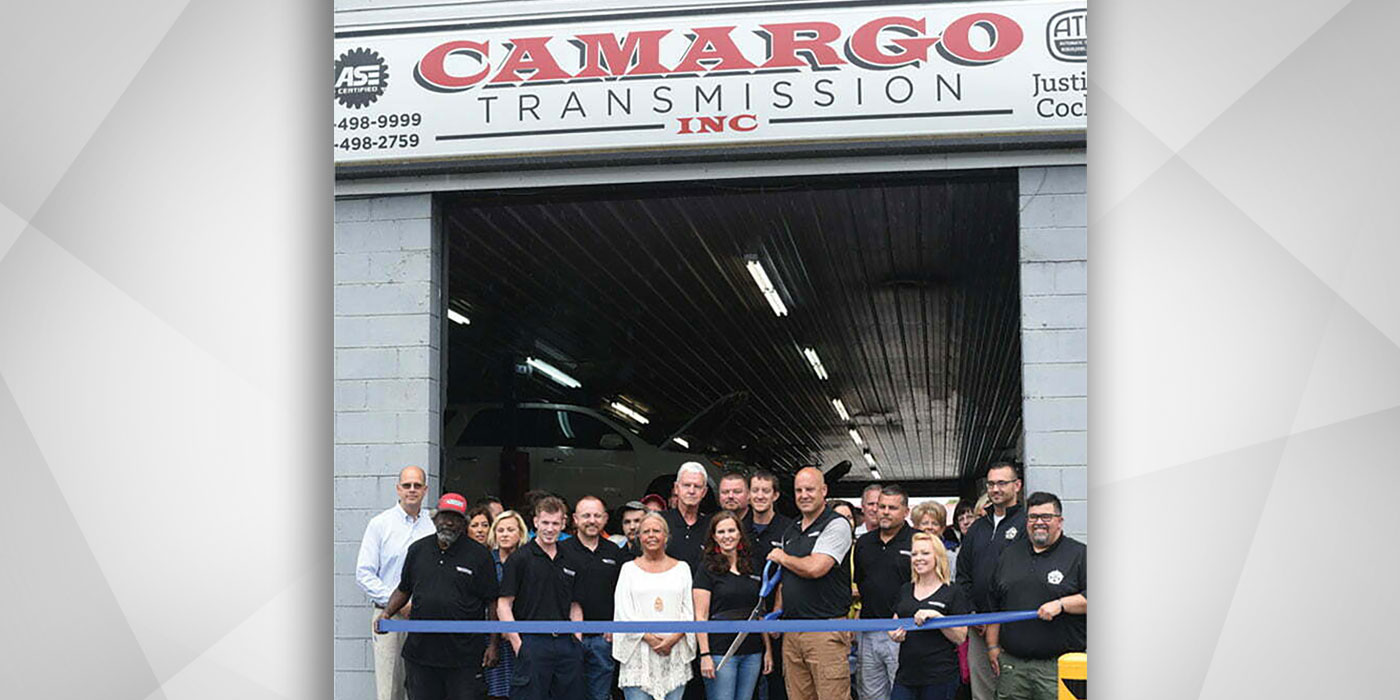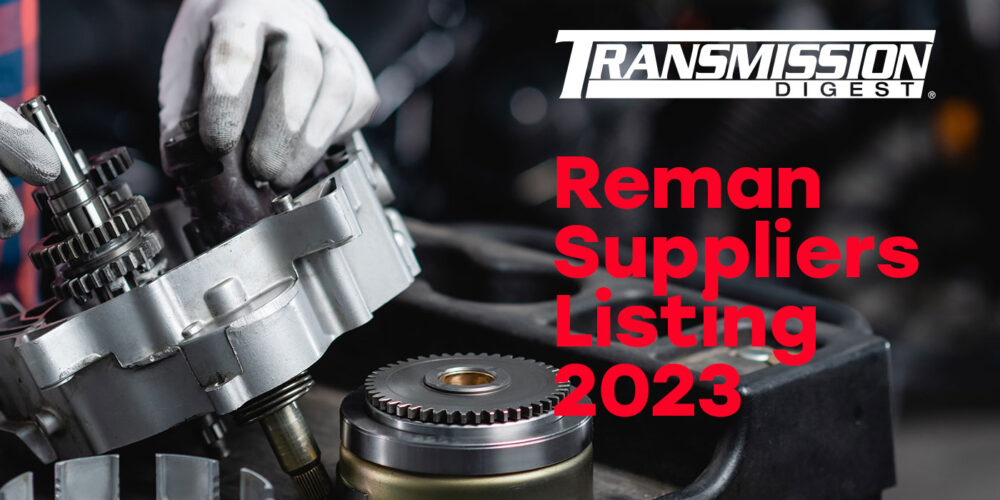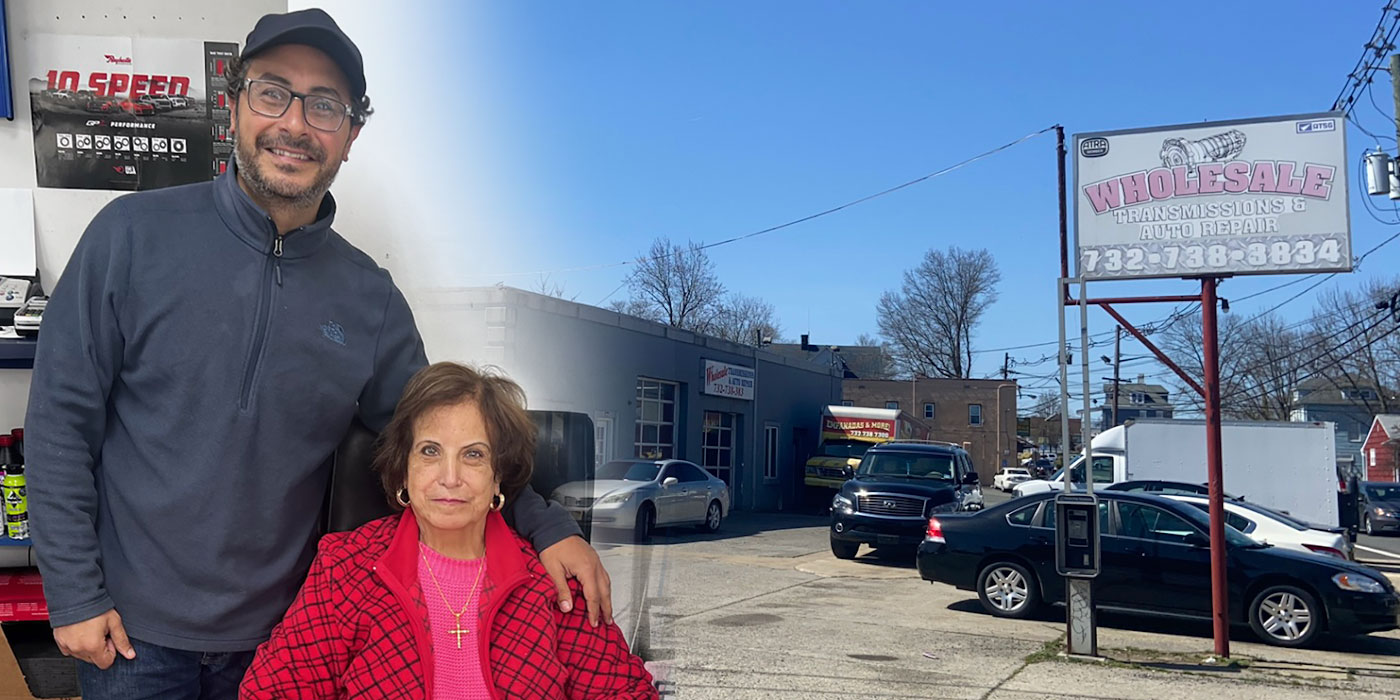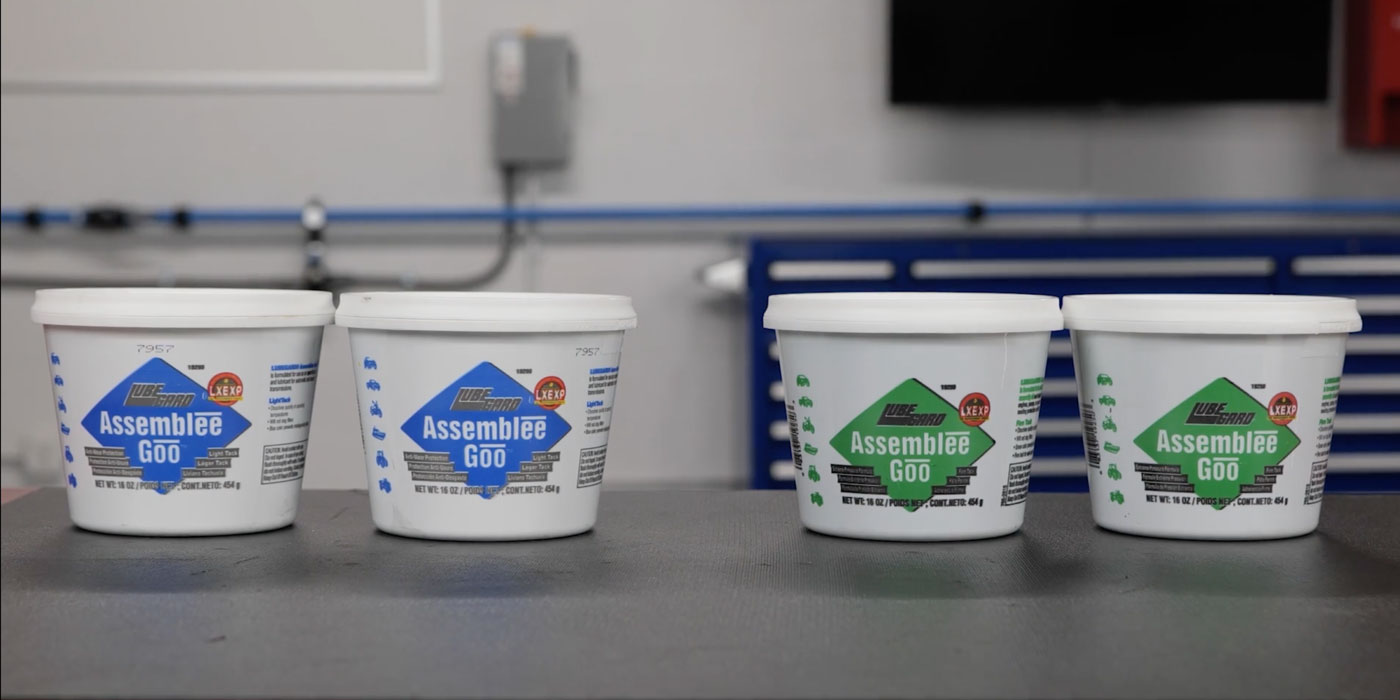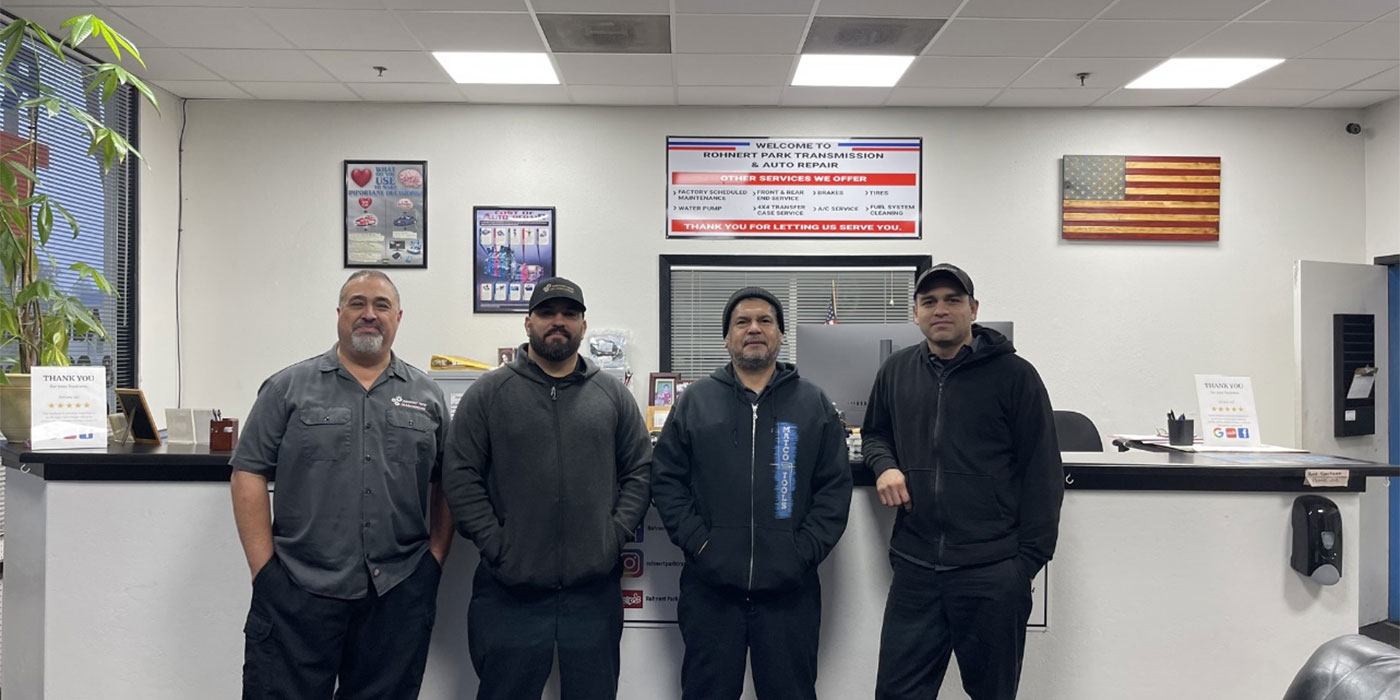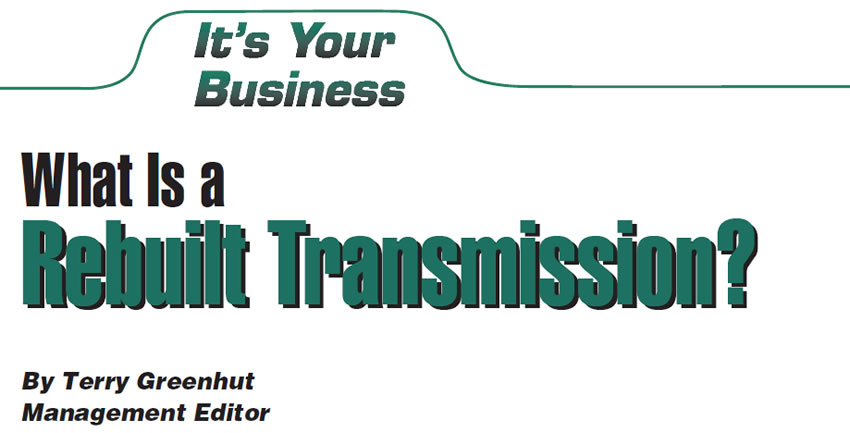
It’s Your Business
- Author: Terry Greenhut, Management Editor
A silly question to be asking people who have been in the transmission rebuilding business for so long, isn’t it? It does, however, seem to get a lot of different replies. If you ask 100 rebuilders you might get 10 different interpretations. That could be why some states have adopted regulations for the minimum standards to which a transmission can be rebuilt and still be called a rebuilt, reconditioned, overhauled or remanufactured transmission. The words all mean the same thing in these states because the lawmakers didn’t want shops to get around the regulation by calling the rebuilt something else.
I helped write the regulation in my home state of New York because I didn’t want a bunch of bureaucrats writing anything the shops couldn’t live with. Of course, I entered my sense of values into the equation. Having been a rebuilder in my own top-quality, top-dollar shop for so many years, I believed that I knew what had to go into the basic overhauling of an automatic transmission to meet the minimum standard.
In my mind it was simple. First the transmission had to be completely disassembled and cleaned. Then all gaskets; seals, either rubber or metal clad; sealing rings, either metal or Teflon; friction clutches or bands of the paper-type-media style; filter; vacuum modulator (if so equipped); any sensors or solenoids that failed to pass a functional test; any worn bushings, thrust washers or bearings; and any hard parts deemed unfit for the minimum-length warranty placed on the transmission had to be replaced. A torque converter had to be changed to meet this minimum standard only if it showed signs of failure or malfunction during the vehicle’s initial road test, if there were unaccountable metal filings in the pan, or if visual inspection and end-play checks deemed it out of specification.
Of course, those were very minimal requirements. The purpose was to not have unscrupulous shops taking out transmissions, making minor repairs, giving them a coat of silver paint and calling them rebuilts. That can be done if there is no regulation of any kind, and I’m sure there are a few less-than-reputable shops that would do it despite regulations or anything else. But like any law or regulation it had to be written for the majority of people who would use it as a guideline for their actions.
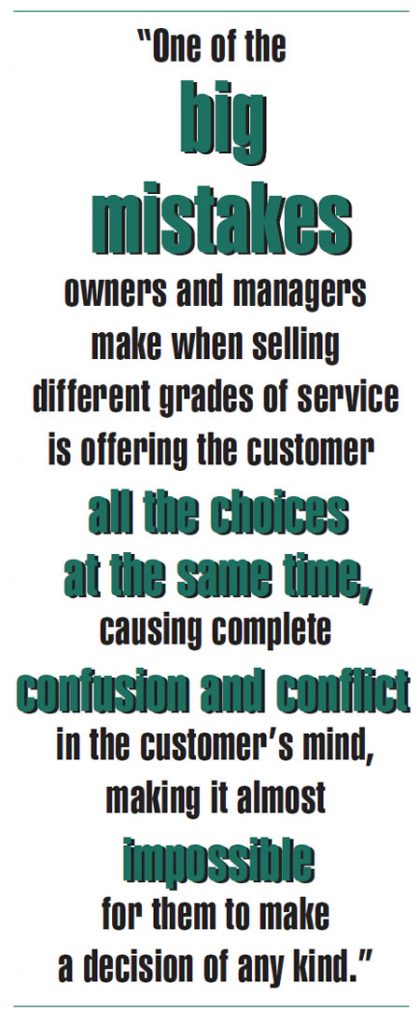
OK, so we have a set of minimum standards that might be mandated by some state agency, but then what? What if we want to sell a transmission of a higher standard? Can we build more goodies into it to make it work better and last longer? Can we get more money for doing a better-than-minimal job. I think we can and we should.
Many states now have insurance commissions that say you can’t sell the same product and offer different-length warranties on it. That would be, in effect, selling insurance. Since transmission shops are not licensed to sell insurance, they would be in violation of that state’s insurance regulations.
For shops to comply, one of two things must happen:
- The shops would have to buy extended warranties from a company approved and licensed to sell them in that state. Then they would have to resell the warranties to their customers, one hopes at a profit. One of the problems with selling warranties that way is that if the transmission were built to only a minimum standard, there is a fair chance that it wouldn’t live through a longer warranty period. This is why so many extended-warranty companies have gone under, leaving shop owners to cover the remainder of these warranty periods. You see, when the warranty companies run their actuarial studies on how long rebuilt transmissions should last, they don’t take into account that a transmission might have been built to only a minimal standard. They think it was built to perform a normal life. When too many of them fail early, it depletes the company’s cash reserves so that eventually it no longer can cover the warranties and it goes out of business. Since these warranties are issued to the shop and not the end-user customer, the shop is on the hook. Even if they weren’t issued that way, the shop no doubt would try to satisfy the customer just to save its reputation in the community.
- They could do additional work to the transmission by adding upgrades and updates to provide a better class of service, which in essence changes the basic product to one that now has a value that would support a longer warranty.
I have long advocated the second method, and this isn’t the first time I’ve spoken of it. From the feedback I have been receiving lately, I thought the topic needed to be revisited. It’s kind of a cruel joke, when you think about it, that a shop might build a less-than-adequate transmission, figuring that the insurance company will have to pay if it fails, and when the company goes out of business the shop has to put a lot of money into fixing it because it will now have to go out and last ’til the warranty ends, which could be a long time. If the shop had built it well to begin with, it might have stayed out and the warranty company might have stayed in business. This is definitely a case of killing the “golden goose.” The same shops that would shortcut the rebuilds also would overcharge the warranty companies in comeback situations, depleting their resources even faster.
The answer could be to warrant it yourself using the good/better/ best method. A good rebuild that has all the basics done to it, including a rebuilt torque converter, could have your 12-month, 12,000-mile warranty. A better transmission that has had, in addition, all new bushings and thrust washers or bearings, a shift-improvement kit, new solenoids and sensors, and any factory updates that have been designed to correct specific problems within the unit could have your 24-month, 24,000-mile warranty. If you want to take it all the way to the best – a 36-month, 36,000- or 50,000-mile warranty – you could add on items like an external cooler, heavy-duty torque converter, heavy-duty bands and clutches (if available for that model), and any factory updates that would bring the transmission up to the standard of the current model year (if the transmission is still being produced).
For added durability you can upgrade with additional aftermarket parts designed to replace components that are known to wear over time, such as certain valves and sleeves etc. You can even offer a complete cooling-system flush as part of the package, along with upgrade replacement of powertrain mounts on those vehicles notorious for breaking mounts. There is no limit to the package you can design for any of the three levels.
How to sell it – the beauty of the three different levels of service is that all are justifiable. You obviously are providing a different amount of parts and labor at each level. The durability and serviceability that you are offering should help you justify the price difference in your mind, where it counts most. What does that mean? You and I both know that we sell only what we are comfortable selling, meaning something we can justify to ourselves and to the customer. That’s why we establish a labor rate based on real numbers so that we can use it confidently as a multiplier when pricing labor. We choose a consistent parts markup for the same reason. We want to be in our comfort zone when we price or sell. We want to be able to refer to base numbers we know are real. By simply applying the same process to all three levels of service, we can give ourselves the same justification we need to be comfortable.
One of the big mistakes owners and managers make when selling different grades of service is offering the customer all the choices at the same time, causing complete confusion and conflict in the customer’s mind, making it almost impossible for them to make a decision of any kind. That prompts the “I want to think it over” objection, which then leads to their getting on the phone and calling around, hoping to get one price to consider instead of the three or more that are confusing them.
The other big mistake is trying to sell the lowest-priced job and then trying to up-sell to a higher one. Once a customer has approved the low-priced job in his or her mind, the sale is over, it is closed and they don’t want to reopen it. They believe that the transmission is going to be fixed at the price they agreed to, so why pay any more? The way to sell it that creates the least amount of confusion, gives the customer the most value and gives you the maximum profit is to sell your best job first. If the customer does not buy it you have two fallback positions.
“Mr. Customer, this is our best job. It has all of the factory updates and aftermarket upgrades (if you want, you can go into an explanation of all those items). It comes with our coast-to-coast 36-month, 50,000-mile warranty and is only ….” Some customers will, at that point, tell you to go ahead, and your sale is closed.
Others will object, in which case you can handle their objections and again try to close. If you have exhausted all your objection handles, you then can drop down to the next level of service and repeat the process. Failing that, you still have more levels to drop to if necessary. This method gives you confidence in your price and flexibility in your offer, increasing the odds of your making more sales at more-profitable prices while allowing you to work within your comfort zone.

Visit www.TerryGreenhut.com.




